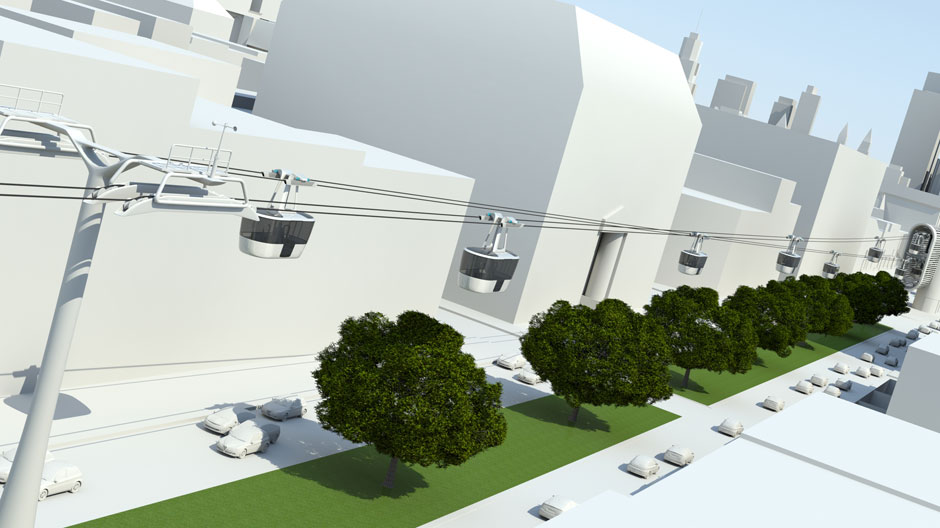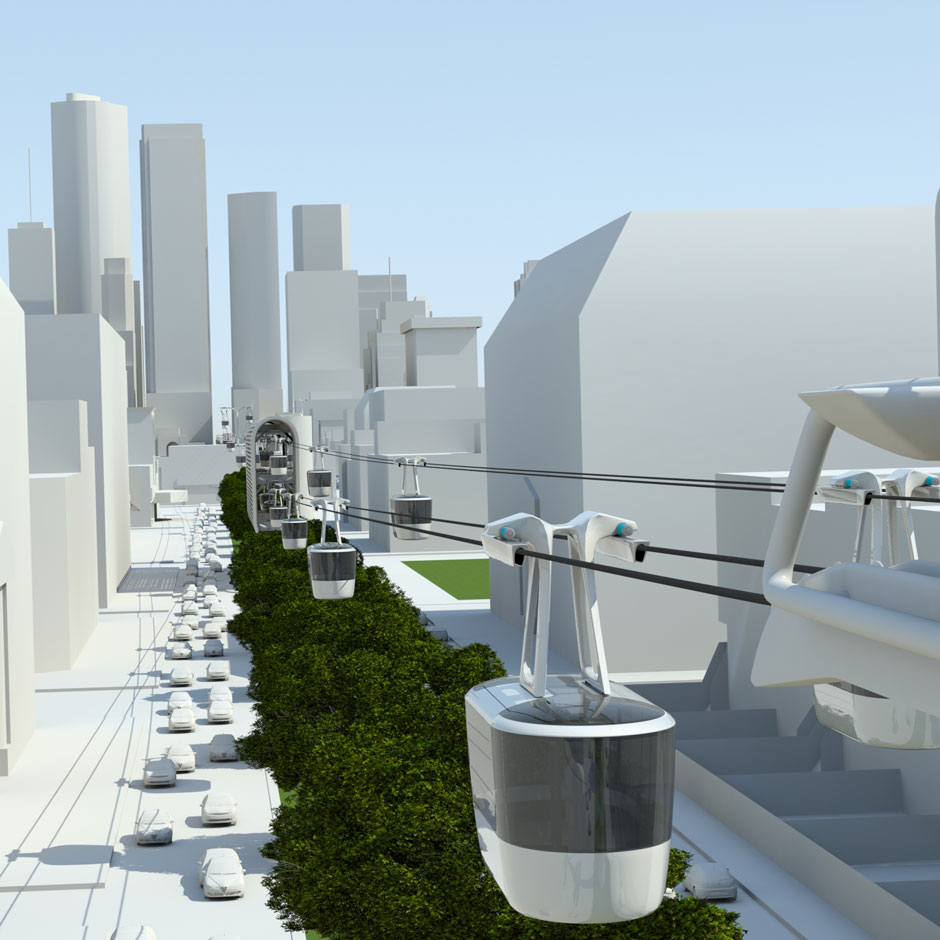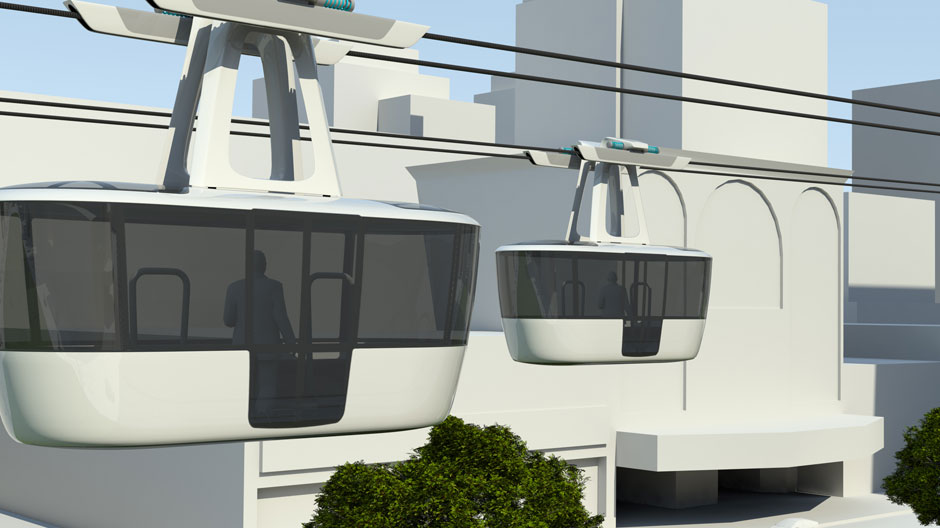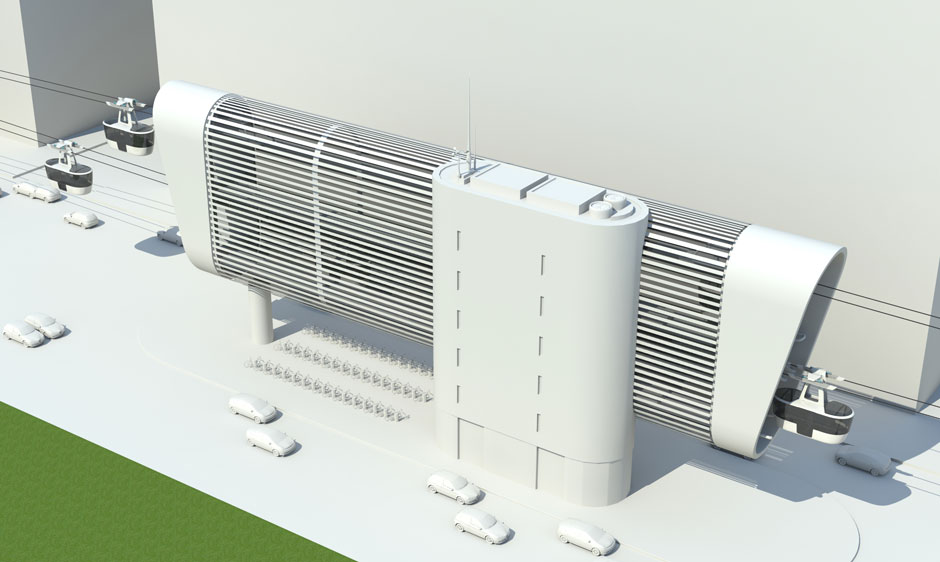In addition to our Three-Level City concept for Singapore, supplying a very specific solution for existing challenges with respect to the limited available space but the fast-growing smart city, we are also developing other approaches for urban cable railways in growing metropolitan areas.
Numerous Western cities already offer cable railways. However, existing solutions tend to be tourist attractions in the urban landscape. Their repeated use by the local population hardly generates any added value. Other existing examples can be found in emerging and developing countries, for example in La Paz in Bolivia, which has the largest local public cable railway network in the world, with a total of three railway lines, and plans to further expand it.
In constructing these cable railways, the focus was usually on their functionality. Frequently the simple fact that some form of public transport is available on a mountain or difficult-to-access terrain seems to be an impressive achievement. What all these transport solutions have in common is that their design conspicuously stands out from the rest of the urban landscape, and strongly reminds us of traditional uses in the field of winter sports.

Advantageous aside from winter sports
Cable railways are suitable for much more than just transporting skiers and snowboarders. Their typical benefits include overcoming differences in altitude or impassable terrain, rivers or similar topographies. In addition, they offer less obvious but nevertheless positive features such as their quick construction time, efficient operation and low energy consumption, the cost-effective maintenance and repairs, low staffing requirements and environmental compatibility related to the very low level of emissions. After all, many gondolas are driven by a single central engine.

In cities there is a radically different environment for cable railways than in Alpine areas. Their construction and links to energy sources is considerably less complicated than in the Alpine regions, but their design against the backdrop of urban habitats and integration in the cityscape are of greater importance.

Optimal integration in living environments
Due to the altitudes in which they operate, cable railways have a much greater impact on urban landscapes than local underground or road-bound public transport. For this reason, we recommend the most low-key and timeless design of gondolas and support columns as possible, and the greatest possible use of glass. Potentially disturbing vibrations and noise emissions near the columns can be curbed by means of various measures. For example sound-absorbing cladding of the pulleys or “active rope suspension” in which sensors trigger an occasional deviation of the rope suspension can optimally contribute to this.
Existing lanes along multilane roads lend themselves to be “natural” routes in an urban environment. If all the support columns were placed on existing median strips, they could be much more effectively integrated in the urban fabric than placed transversally. The prevailing shortage of space or very narrow streets can be counteracted by supplying the cable car systems on only one side of the station i.e. extra-narrow stations with platforms which are above and not next to each other.


Integral part of a multimodal offering
A key aspect to be taken into consideration in constructing cable railways for urban areas is ensuring good links to the existing transport network and a multimodal offering. The stations should be positioned so that commuters can change directly from the parking deck of a park and ride facility on the outskirts of the city to a gondola. For example, at the different exits they could transfer to a sharing or pooling system and cover the last meters to their offices with a rented bicycle. All available connections to other transport solutions should be optimally integrated within the context of a comprehensive solution for the benefit of all users.
The climbing capability of a cable railway can be ideally exploited for their connections to ground-level transport. Even a direct connection to the underground is conceivable. An underground station whose surrounding environment is open to the outside not only offers space for shopping but also living space suffused with daylight and possible access to the cable railway. Separate side lanes for gondola maintenance and repair, a parking garage with roof greening and an attractive pool or foundation below the cable railway route are alternatives to barriers in the entrance and exit areas, featuring the additional advantage of a better climate in the station and mall.
Individually tailored to local conditions
Many individual solutions and concepts optimally tailored to existing circumstances are conceivable. But only thing should be kept in mind: cable railways in a city do not comprise an application of mountain railways in a relatively flat landscape. Instead, they represent the transfer of a technology which has proven its value in Alpine regions to a radically different urban environment.
The acceptance by users as well as neighboring residents and the inhabitants of the city can be significantly increased by adapting the projects to local conditions as much as possible. Under these circumstances it is conceivable that cable railways could also become an integral part of local transport networks in Europe.

